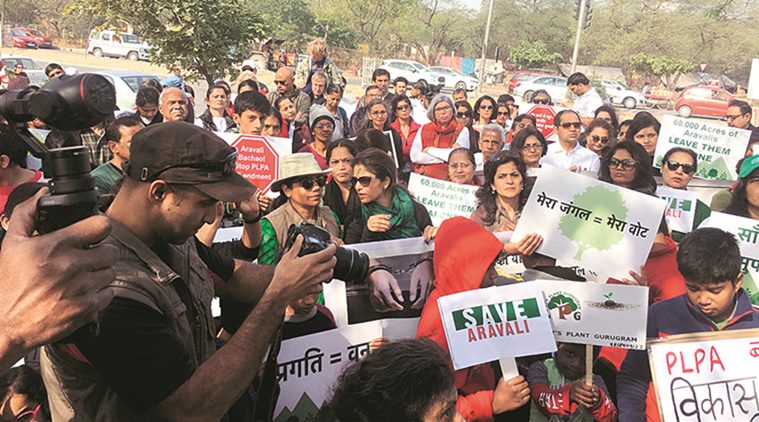
GURUGRAM: Hundreds of Gurugram residents armed up on February 24, to protest against the amendments proposed by the Haryana government to the Punjab Land Preservation Act (PLPA), 1900, in an ‘amendment bill’ that is expected to be tabled in the Vidhan Sabha soon.
According to the environmentalists, this step will risk large areas of the Aravalli range for tree felling, which was secured under the Punjab Land Preservation Act. Over 60,000 acres of forests will be at risk in multiple districts, including Gurugram, Faridabad, Nuh, Rewari, and Mahendragarh. More than 10,000 acres of forest in Gurugram and Faridabad will be at risk.
Chetan Agarwal, environmental analyst said, “This subverts the Supreme Court’s directives to protect the Aravallis at any cost, and to treat PLPA areas as forests. The entire Aravallis will now be open for real estate development, mining, and any activity the state fancies. The amendments proposed are with retrospective effect, and are supposed to apply from 1966, meaning anything done after that will become null and void. All illegal construction and activity will become legalized.”
The PLPA,1900, practiced by the Government of Punjab, in order to prevent soil erosion. It prohibits certain activities, including cutting of trees and is applicable to 14 districts out of 22 of Haryana, including Gurugram and Faridabad. It accounts for around 25 per cent of the state’s total geographical area.
Manohar Lal Khattar, Chief Minister of Haryana said that PLPA was coming in the way of development works in the state and the government will bring an amendment bill to create a balance in regulating environment and development.
This move will increase the vulnerability of Aravalli hills, especially in a situation where the PLPA notification, which is valid for “20 to 30 years”, has not been renewed for the last four years. If amended, the Act will leave not just the forest area, but also 400 species of native trees, shrubs, and herbs, 200 native and migratory bird species, and wildlife such as leopards, hyenas, and civet cats who inhabit it, in the lurch.

